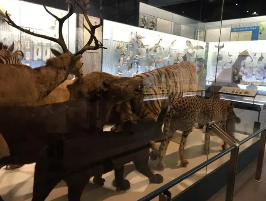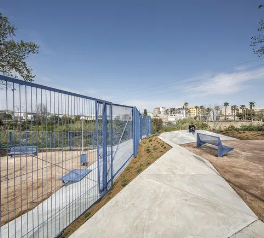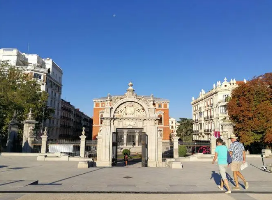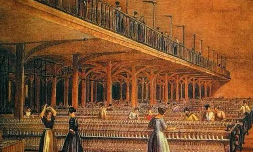The Change of Western Natural History Museum from the comprehensive perspective of culture and art
6 min read
After hundreds of years of precipitation and accumulation, Western natural history museums have developed a complete collection, exhibition and research system. The natural history museum appeared at about the same time as the art museum. The difference between the two lies in that the collections of the natural history museum are usually not created by artists for the purpose of art, but the ore specimens, animal and plant specimen models and other objects that directly express the shape of things and natural landscape. Its collection and display are constantly updated with the changes of philosophy, social environment, art and technological means in different periods, and reflect the changes of human cognition towards nature and human self.
Since the beginning of 2020, the COVID-19 epidemic has swept the world. When facing nature, it is more important for mankind to realize that man and nature are one community from a historical perspective. From rare cabinets/rare rooms, animal and plant specimens, live action simulations, dinosaur models, to touring exhibitions since the Cold War era, and the interaction between natural history museums and popular culture during the neoliberal period, we can see that Western ideas and understandings of nature have been swinging back and forth between rationality and sensibility in modern history. After the epidemic, how to reshape the relationship between man and nature through the re-creation of exhibitions in natural history museums and create a new “life community between man and nature” is also the historical responsibility that China’s natural history museums will shoulder in the future.
In the study of museums, a considerable part is based on theoretical argumentative works. The collection and display that have existed in the history of museums are “what they do and do”. To study the history of a museum, one should not only listen to its words, but also observe its actions. Chris Healy has argued that the museum itself is “a site of archaeology, with layers of the past that continue to the present day.” This paper will explore, reproduce, recognize, study and interpret the exhibitions in the history of Western Natural history museums, so as to reveal some of the history that is not expressed in the text and even hidden.
1. Cabinet of Curiosities and Curiosities: Early Modern Western Natural Collections and Displays (17th — 18th Centuries).
Since the 17th century, with the deepening understanding of nature in the Enlightenment, Chinese and Western researchers began to consciously collect strange objects with certain visual characteristics in nature. From the perspective of today’s disciplinary classification, this collection is disorganized. Fossilized shells and red coral may be placed alongside religious objects. The confusion also shows in its appellation, Cabinet de curiosite in French and Kunstkammer/Wunderkammer in German. The French translation into Chinese is “curiouser room” and the German is “art room/curiouser room”. The collection is divided into objects from nature and objects created by man. The princes and nobles of continental Europe and a number of academic institutions built their collections of curiosity houses in the 17th and 18th centuries, some of which eventually became the collections of natural history museums.
Ii. Animal and Plant Specimens: Preliminary Construction of Exhibits in Western Natural History Museums (Late 18th Century — 19th Century).
After the Napoleonic Wars, Europe saw a wave of modern nation-states in the late 18th and early 19th centuries. The Natural History Museum, which was founded after this time, draws much of its collection from the natural history collections of herbs and rocks of the princes and nobles. Other parts of the collection benefit directly from the great voyages and colonization that began in the 16th century. These collections laid the foundation for the theoretical development of natural science and natural history collecting.
Iii. Real Scene Simulation: Nationalism, colonialism and artistic and dramatic Additions in Western Natural History Museums (Late 19th Century — 1930s).
From the beginning of the 20th century, this scientific and disciplinary form of presentation began to face a serious problem: rigid, not attractive to the audience; Animal and plant specimens are also separated from the original habitat, like hunting and gathering trophies. At this time, a scaled model originally used mainly for religious festivals entered the field of vision of exhibition design. This was the origin of the earliest “live simulation”.
In this period, the consciousness of man modifying nature and the large-scale confrontation between man and nature based on modern machinery and chemistry set the stage for the “silent spring” caused by the excessive use of chemical pesticides.
Iv. The Cold War Era: Specialization, themeization and Technologicalization of Exhibits in Western Natural History Museums (1960s — 1980s).
From the start of the Great Depression to the end of World War II, most American natural history museums lacked the funds for major exhibitions and updates, and the development of new theories in the field was slow. After World War II, the National Science Foundation’s funding for Natural history museums was mostly for research projects, and the renovation of exhibitions was put on hold. But there have also been several new exhibitions, such as The Human Body, which focuses on the human body and anatomy.
V. Environmentalism: New Opportunities for Exhibition in Western Natural History Museums (1970s — 1990s).
At the same time, a new kind of reflection on nature and the environment was born in the United States, which is environmentalism. The publication of two books in the 1960s did much to shape public awareness of environmental protection. The first was Rachel Carson’s Silent Spring, published in 1962, and Paul Richie’s The Big Population Bang, published in 1968.
Vi. The Influence of Neoliberalism: Marketing Exploration of Western Natural History Museums Combined with Traveling Exhibitions and Film Industry (1990s — 21st Century).
In the face of the rapid development of science and technology during the Cold War, and the continuous development of amusement facilities with natural history elements, Western natural history museums are also looking for new ways to meet the needs of a new generation of audiences. In this period, exhibition design ideas broke free from the shackles of natural science and museums, and more and more marketing theories created by the business administration discipline which was born in the United States after World War II and gradually became mature were used to guide exhibition design. Marketing theory began to influence the value orientation of museum exhibition.
Museums recognize that scientific knowledge is their own “product” that can be “a combination of education and entertainment.” At the market level, it is also a response to the competition for public attention by the entertainment industry under capital controls. But no natural history museum is capable of consistently producing high-quality exhibitions on its own. As a result, a kind of semi-commercial traveling exhibition was born.
We are in an unprecedented information age and the vast earth has become a “global village” where everything is connected. The Museum of Natural History has experienced hundreds of years of accumulation from the beginning of its embryonic development. The author takes the liberty to assume a bold idea: based on the history of the development of natural science, the history of human transformation and understanding of nature, the history of the development of the relationship between man and nature, and the history of the development of human natural philosophy and natural ethics, to create a new kind of natural history museum. The exhibition design in this museum not only reflects the change of human view of nature, but also reflects the development of the natural history museum itself. The museum stands at the forefront of showcasing old design ideas, becoming a museum of natural history museums.






